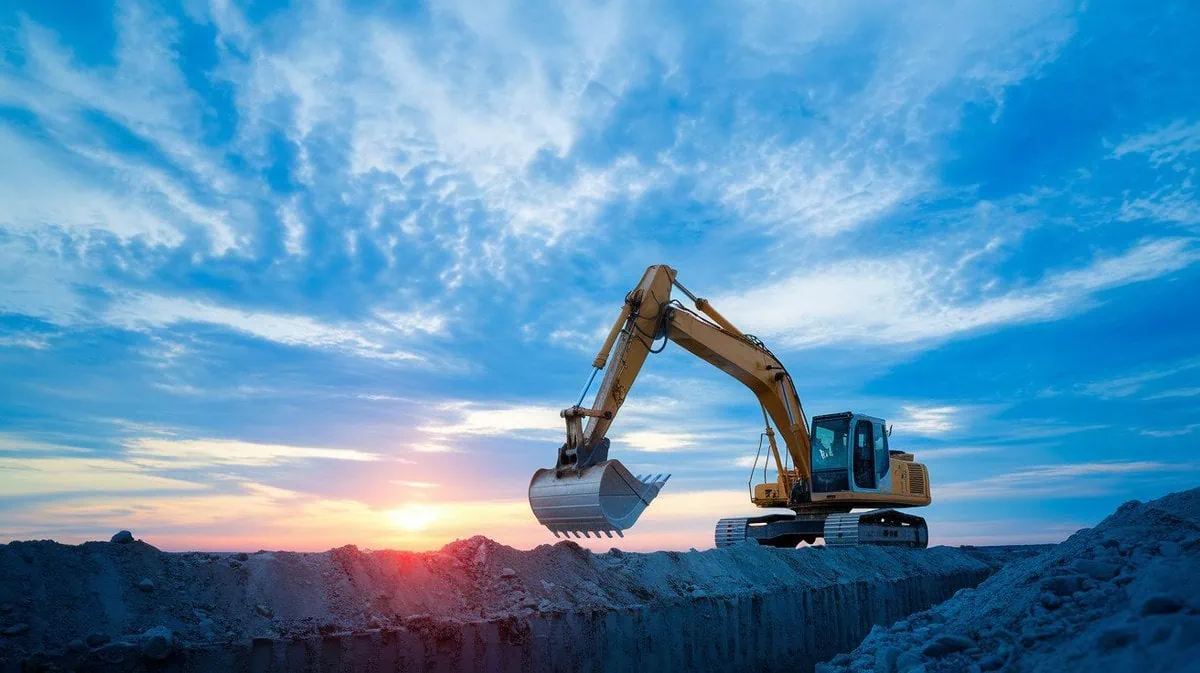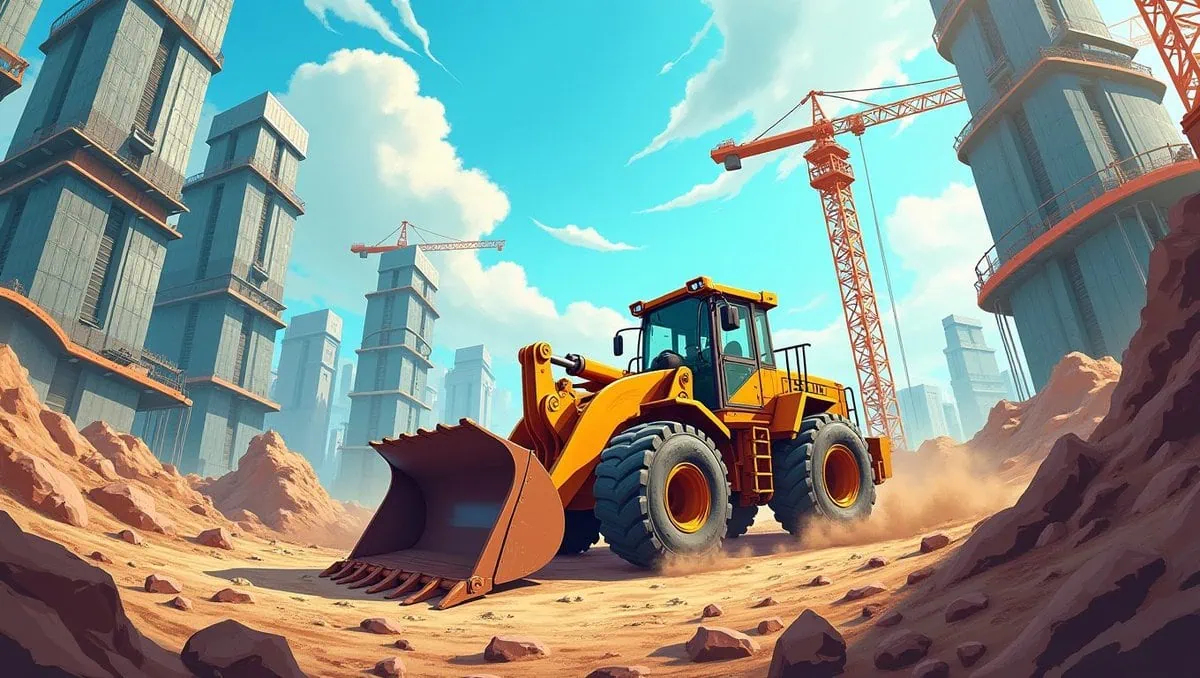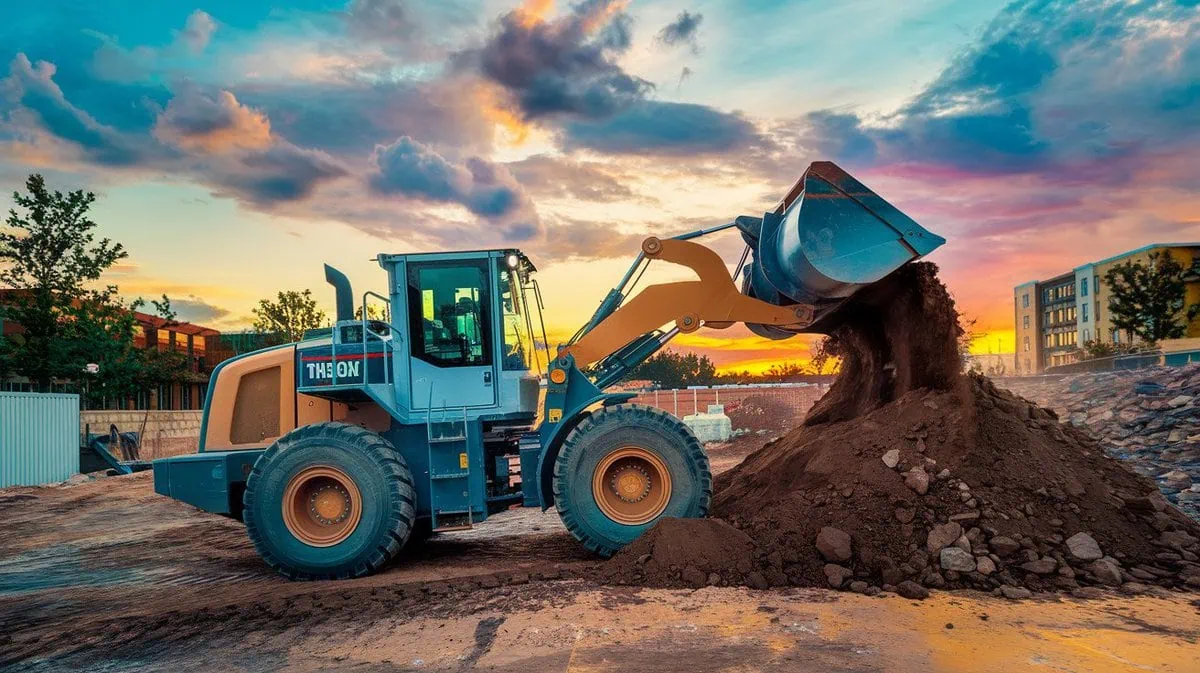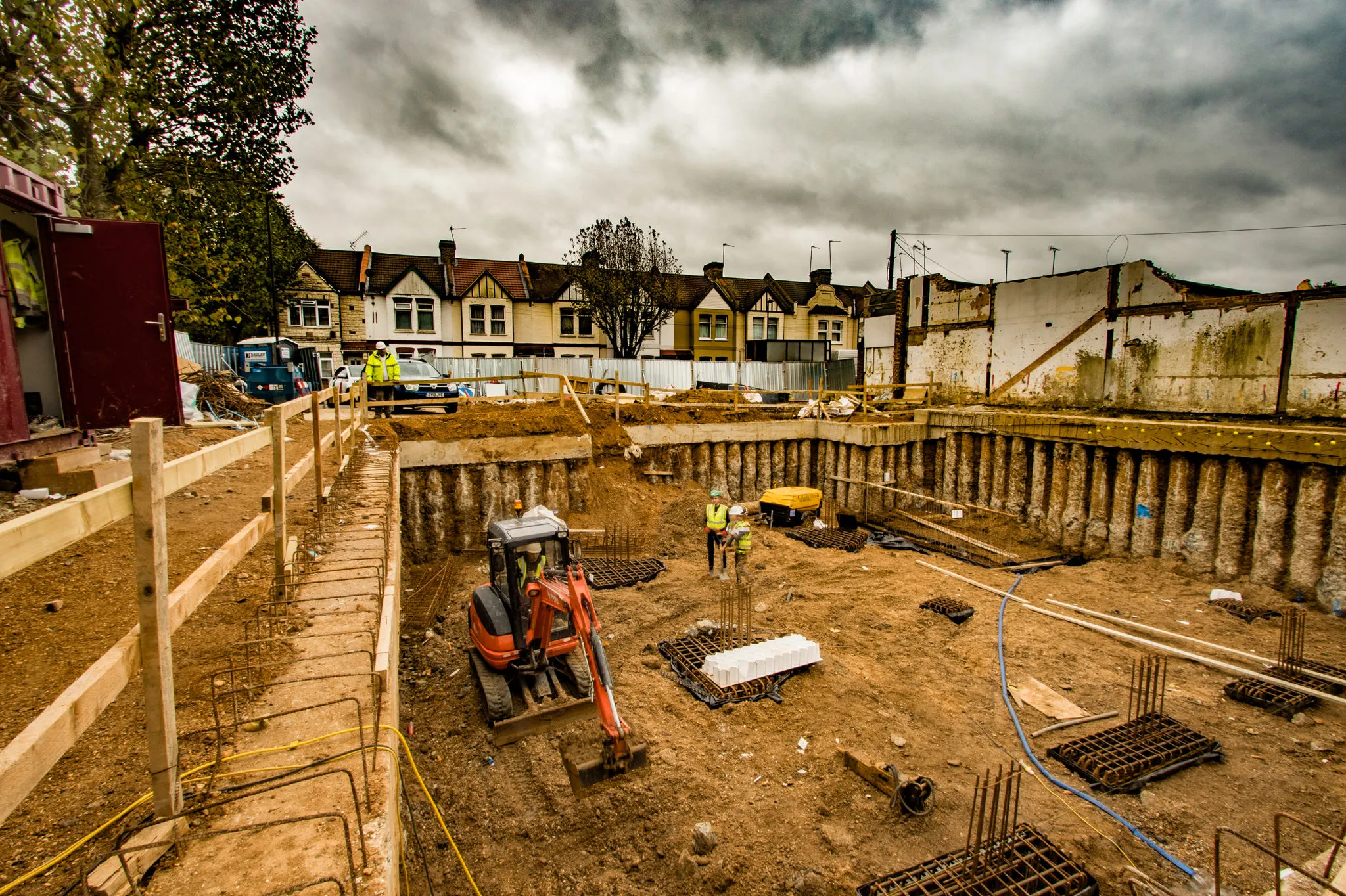When choosing the right Bobcat excavator sizes for your project, you may feel overwhelming. With so many options available, making the right decision is crucial to maximizing efficiency and minimizing costs. Selecting the wrong size may lead to delays, higher operational costs and reduced productivity, which can effect your project’s timeline. Fortunately, understanding the various Bobcat excavator sizes and their unique capabilities can guide you toward the perfect model for your specific needs.
In this article, we’ll discuss the different Bobcat excavator sizes, how to select the most suitable one based on your project requirements and the benefits of each model. Armed with this knowledge, you’ll be able to make an informed decision that will enhance your project’s success.
Selecting the right Bobcat excavator sizesis essential for efficiency and cost-effectiveness. Whether you need a mini, small or medium-sized model, understanding the terrain and workload helps ensure the best choice. The correct size enhances productivity and avoids unnecessary costs.
Let’s dive deeper into Bobcat excavator sizes, starting with the brand’s reputation and then we’ll explore how to choose the ideal size and model for your project.
Bobcat Excavator Brand Overview and Benefits
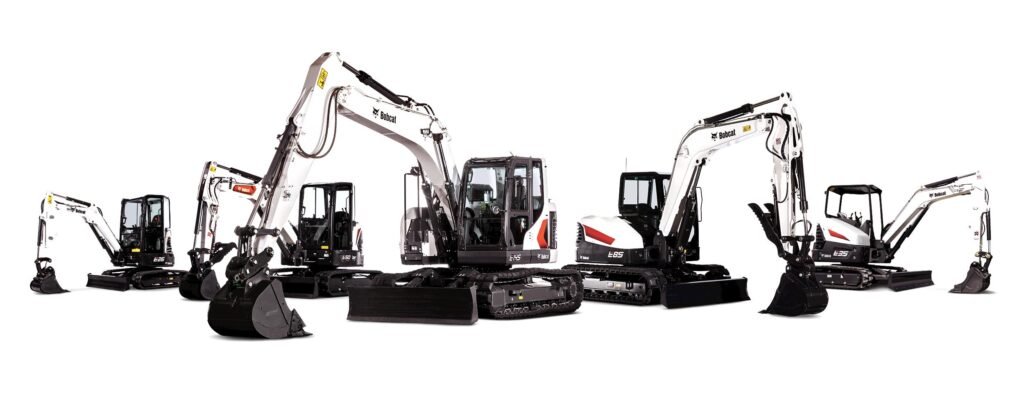
Bobcat is recognized worldwide for its high-quality, compact construction equipment. Known for its durability and versatility, Bobcat excavators are trusted by contractors across various industries, offering exceptional performance even in the most challenging environments. Let’s take a closer look at what makes Bobcat excavator models top choices.
Bobcat excavatorsstand out due to their advanced engineering, reliability and excellent fuel efficiency. Their compact size allows for better maneuverability, making them perfect for small to medium-scale projects.
Founded in 1947, Bobcathas pioneered innovations in small, high-performance construction equipment. Over the years, their excavators have evolved to offer greater fuel efficiency, easier operation and longer service life. Bobcat’scommitment to quality ensures that their machines provide exceptional value for money, whether for residential landscaping or large-scale industrial projects.
Bobcat‘s excavators come in various sizes, each designed for different workloads. The company’s focus on providing durable, easy-to-maintain equipment makes their excavators a go-to choice for businesses looking to get the most out of their investment. Whether you need a machine for tight spaces or heavy-duty tasks, Bobcatoffers a versatile solution.
Common Bobcat Excavator Sizes Classifications
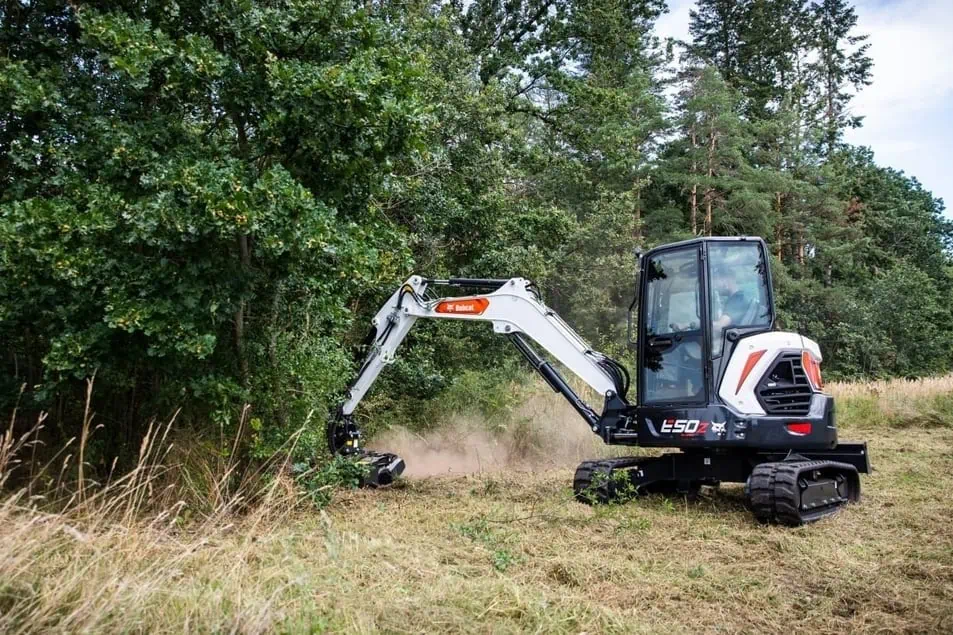
Bobcat excavators come in several distinct sizes, from mini to medium machines, with varying specifications. The main factors that distinguish these excavators are their working weight and digging depth. Understanding these classifications will help you determine which bobcat excavator models fits your needs.
Bobcat excavators are typically categorized into mini, small and medium sizes, each designed for specific job site needs. Bobcat mini excavators excel in confined spaces, while small and medium excavators are better suited for larger and more demanding tasks.
Bobcat Mini Excavators: These are the smallest machines in Bobcat’s lineup. They typically have a weight range of 1,000 kg to 3,500 kg, making them ideal for tight and confined spaces. Bobcat mini excavators are easy to transport and maneuver, often used for small-scale projects like landscaping or trenching.
Bobcat Small Excavators: Bobcat’s small excavators, ranging from 3,500 kg to 7,500 kg, offer a balance of maneuverability and digging power. These Bobcat excavator models are ideal for general construction tasks, including small building projects, light demolition and excavation in medium-sized spaces.
Bobcat Medium Excavators: Medium-sized Bobcat excavators weigh between 7,500 kg and 12,000 kg, offering greater stability and power for more demanding jobs. These bobcat excavator models are typically used for heavy-duty excavation, larger landscaping projects and construction sites that require extended digging reach and depth.
How to Choose the Right Bobcat Excavator Size for Your Project
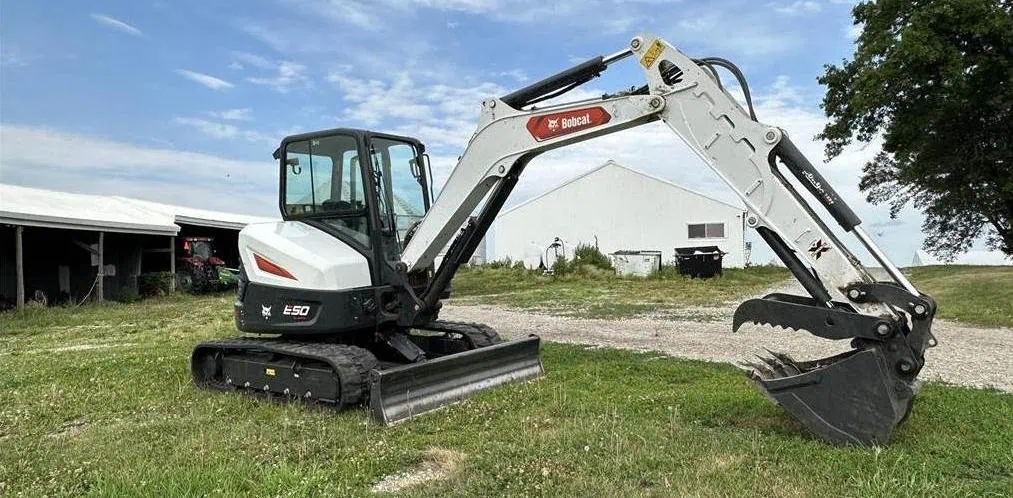
Choosing the right Bobcat excavator sizes is a key decision that impacts the efficiency, cost and overall success of your project. It’s not a one-size-fits-all approach, the right choice depends on various factors such as the type of work you’re working, the condition of the terrain, the available space and even future project needs. Choosing the correct Bobcat excavator sizes ensures that you are not over or under-equipping your job site, which can lead to wasted time and increased costs. Here’s a guide to help you choose the best Bobcat excavator sizes based on your project’s specifics.
When selecting Bobcat excavator sizes, consider the site’s space, the soil type and how deep you need to dig. Matching these factors with the right Bobcat excavator sizes will optimize both performance and cost efficiency for your project.
To choose the best Bobcat excavator sizes for your project, consider these essential factors:
Site Conditions: Start by assessing the size and accessibility of your project site. If you’re working in a confined space or a location with narrow access, a smaller or Bobcat mini excavator may be the most suitable choice. These Bobcat excavator models are ideal for urban construction, residential jobs and landscaping projects where maneuverability is crucial. The smaller size also minimizes disruption to surrounding areas, which is especially important in residential zones or near existing structures.
Soil and Terrain: Next, think about the type of soil and terrain on the site. If the ground is soft, sandy or muddy, larger Bobcat excavator sizes with tracks or specialized flotation features may be required. These machines offer better stability, preventing the equipment from sinking or becoming stuck. In contrast, if your project involves hard or rocky ground, a medium to large-sized Bobcat excavator models will provide the necessary digging power and strength to handle tough conditions effectively. Medium-sized excavators strike a balance between strength and flexibility, making them ideal for mixed terrains, including rough and uneven surfaces.
Excavation Depth and Reach: The excavation depth needed is another critical factor in determining the right Bobcat excavator size. For projects involving deep trenches, basements or large excavation tasks, a medium-sized to large Bobcat excavatoris ideal. These machines offer better digging depth and reach capabilities. However, if the project requires more precise digging or shallower trenches, a smaller Bobcat excavatoror mini excavator can still accomplish the task with high efficiency. Smaller models also work well for precision tasks like digging around pipes or other utilities where depth is not as critical.

Weight Capacity and Lifting Power: If your project involves lifting heavy materials like rocks or construction debris, you’ll need to ensure that the Bobcat excavatoryou choose has sufficient lifting capacity. While larger models offer more lifting power, medium-sized models still provide a good balance of strength and portability, especially when lifting materials in tighter spaces. Always verify the weight capacity of the excavator you are considering, ensuring it aligns with your project’s needs.
Fuel Efficiency: A key consideration when choosing Bobcat excavator sizes are the operational cost, particularly fuel efficiency. Larger models typically consume more fuel, leading to higher operating costs. However, if your project requires a large machine due to its power or digging capabilities, this trade-off may be necessary. For smaller projects or short-term tasks, smaller Bobcat excavator sizes will be more fuel-efficient, thus saving you money over the duration of the project.
Choosing the right Bobcat excavator sizefor your project requires a careful evaluation of the site’s layout, terrain, excavation requirements and operational costs. Understanding these factors will help you make an informed decision, ensuring you invest in the right size that delivers the performance and efficiency you need while keeping costs manageable. Whether you opt for a small, compact model for tight spaces or a larger machine for heavy-duty tasks, the right choice can significantly enhance the productivity and success of your project.
Common Mistakes in Choosing the Right Bobcat Excavator Size

When selecting a Bobcat excavator models, contractors often make critical mistakes that can significantly affect the efficiency, costs and safety of their projects. These errors usually involve selecting the wrong Bobcat excavator sizes, failing to account for terrain and site conditions or overlooking the potential future needs of the project. Making the wrong choice can lead to wasted resources, higher operational costs and delayed completion times, while choosing the right machine can optimize performance, reduce expenses and improve productivity. Here’s a breakdown of the most common mistakes contractors make and how to avoid them.
1. Overestimating the Bobcat Excavator Size Needed
One of the most common mistakes is choosing Bobcat excavator models that is too large for the task at hand. While it may seem logical that bigger is better, a larger excavator often leads to inefficiency in various ways. First, large machines are less maneuverable, especially in confined or tight spaces. If your worksite involves narrow areas, a Bobcat excavator that is too big will struggle to navigate, ultimately slowing down work progress.
Additionally, larger Bobcat excavator sizesconsume more fuel, which can significantly increase operational costs. Overusing a bigger machine on tasks that don’t require its full capacity also leads to unnecessary wear and tear, which can shorten its lifespan and increase maintenance costs. Lastly, a large machine can cause damage to the ground, leading to soil compaction or other issues that might affect future tasks on the site. For smaller or residential jobs, opting for a more compact and fuel-efficient Bobcat excavatorcan be a more cost-effective and productive choice.
2. Underestimating the Power Requirements
While smaller Bobcat excavator sizesmay be cost-effective, they can also cause problems if the machine lacks sufficient power to handle the workload. Underestimating the required power is a common mistake that leads to slower progress, equipment failure and costly repairs. A Bobcat excavatorthat is too small for the job will struggle to lift heavy loads or dig through tough materials like dense soil, rock or debris. This results in decreased efficiency, increased labor hours and potential delays.
Overworking a small excavator can also cause premature breakdowns and increase maintenance costs, as the machine is being pushed beyond its capabilities. Moreover, smaller Bobcat excavator sizesoften have limited reach and digging depth, making them unsuitable for deep excavation projects or heavy lifting. To avoid this mistake, assess the project requirements carefully and choose an excavator that meets the power demands of your tasks.

3. Ignoring Terrain and Site Conditions
Another mistake that can lead to inefficiency is neglecting to account for the terrain and conditions of the job site. The Bobcat excavator sizes that works well on one site may not be suitable for another due to factors like ground stability, accessibility and terrain type. If the site has soft or wet conditions, a larger excavator may struggle to move or become bogged down. In such cases, a smaller, more lightweight Bobcat excavator with specific features, such as flotation tracks, is often a better choice for maintaining efficiency.
On the other hand, hard, rocky soil requires more powerful equipment capable of digging deeper and lifting heavier loads. A compact or smaller Bobcat excavator size may not be sufficient to handle these materials, resulting in slower progress and potential damage to the equipment. Similarly, if the worksite has narrow access points or tight spaces, selecting a machine that is too large could restrict movement and hinder progress. To ensure optimal performance, carefully evaluate the worksite conditions before selecting your Bobcat excavator sizes.
4. Failing to Account for Future Needs
Many contractors make the mistake of focusing only on the immediate demands of the current project without considering future needs. This can lead to equipment that is underutilized for future tasks, which wastes both time and money. A Bobcat excavatorthat works for the current project may not be suitable for future, more complex tasks. Investing in a slightly larger or more versatile machine that can handle a wider range of projects is often a smarter long-term decision.
For example, if you anticipate upcoming projects that involve deeper digging, heavier lifting or working in more challenging environments, choosing a Bobcat excavator sizethat can accommodate these tasks will save you the hassle of upgrading in the future. Additionally, larger machines may offer greater versatility, enabling you to take on a broader range of projects without requiring additional equipment.
Recommended Bobcat Excavator Models and Detailed Specifications
Depending on your project’s needs, Bobcatoffers several models across different sizes, each with its unique features and capabilities. Below, we’ll introduce some of the most popular models, providing detailed specifications and applications to help you make an informed decision.
From mini excavators like the Bobcat E165to medium-sized models like the Bobcat E165, there’s a machine for every job. Each model is designed with specific tasks in mind, ensuring that you can select the right one for your worksite.
Below are the specifications for some of the most popular Bobcat excavator models, including mini, small and medium sizes. Each machine has been designed for specific applications, ensuring optimal performance on the job.
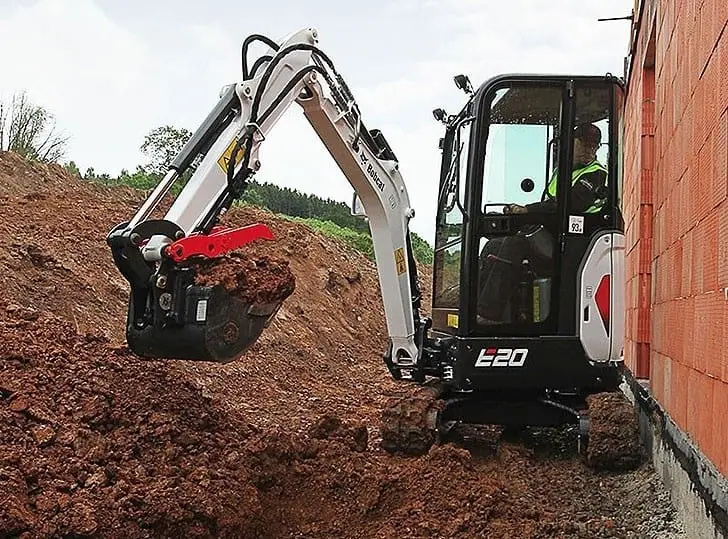
Bobcat Mini Excavator: Bobcat E20
- Overview: The Bobcat E20 mini excavator offers exceptional power in a compact design, making it ideal for tight spaces and precision tasks. Its retractable undercarriage ensures easy access to confined areas.
- Advantages: Superior maneuverability, reduced operating costs, and minimal ground disturbance during operation.
- Applications: Landscaping, trenching, residential utility work, and small-scale demolition.
| Specification | Bobcat E20 |
|---|---|
| Operating Weight | 1,946 kg |
| Engine Power | 13.9 kW |
| Digging Depth | 2,560 mm |
| Maximum Reach | 4,093 mm |
| Maximum Dump Height | 2,817 mm |
| Width (Retracted) | 980 mm |
| Bucket Capacity | 0.035 m³ |
| Travel Speed | 4.2 km/h |
Bobcat Small Excavator: Bobcat E50
- Overview: The Bobcat E50 small excavator delivers reliable performance for medium-scale jobs. Its enhanced hydraulic system ensures smooth and powerful digging.
- Advantages: Increased lifting capacity, better stability, and versatile operation.
- Applications: Road construction, small building foundations, and agricultural trenching.
| Specification | Bobcat E50 |
|---|---|
| Operating Weight | 4,995 kg |
| Engine Power | 36.5 kW |
| Digging Depth | 3,524 mm |
| Maximum Reach | 6,062 mm |
| Maximum Dump Height | 3,787 mm |
| Width | 1,960 mm |
| Bucket Capacity | 0.13 m³ |
| Travel Speed | 5.2 km/h |
Bobcat Medium Excavator: Bobcat E85
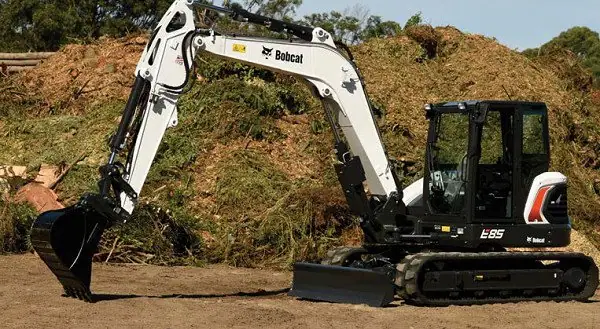
- Overview: The Bobcat E85 medium excavator provides superior digging depth and power for more demanding construction and excavation tasks. Its advanced features boost productivity on large projects.
- Advantages: Enhanced hydraulic flow, robust engine performance, and high operator comfort.
- Applications: Heavy excavation, infrastructure development, and large-scale trenching.
| Specification | Bobcat E85 |
|---|---|
| Operating Weight | 8,730 kg |
| Engine Power | 44.3 kW |
| Digging Depth | 4,663 mm |
| Maximum Reach | 7,413 mm |
| Maximum Dump Height | 5,067 mm |
| Width | 2,250 mm |
| Bucket Capacity | 0.25 m³ |
| Travel Speed | 5.3 km/h |
These tables provide detailed technical specifications for each Bobcat excavatormodels. The performance data, including operational weight, engine power, digging depth and bucket capacity, will help you determine the right model for your needs. Depending on the type and scale of your project, these models offer various advantages and are tailored for different applications.
Zusammenfassung
Choosing the right Bobcat excavator sizes is key to the success of your project. Consider the terrain, excavation depth and space constraints to select the optimal machine that fits your needs. By choosing wisely, you’ll enhance your project’s efficiency and reduce unnecessary costs. We are professional supplier of used construction machinery in China, if you have any problems or needs, please Kontakt mit uns for more information, we like to discuss with you.

